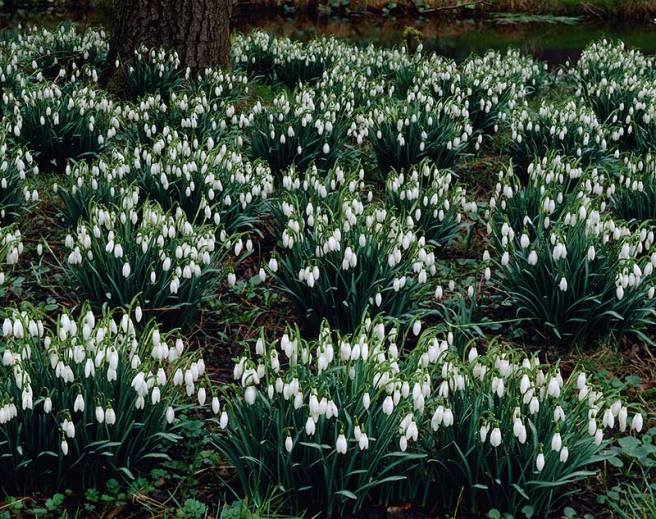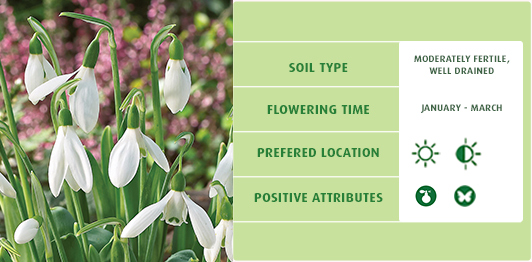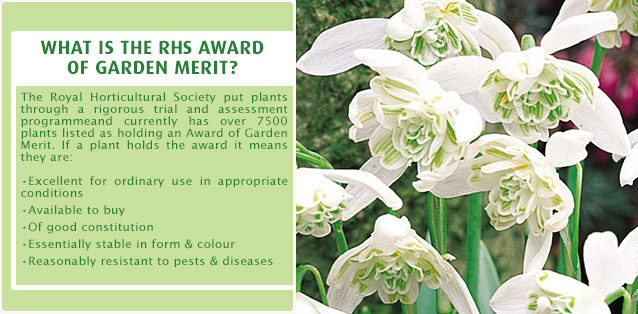Snowdrops (Galanthus)

Snowdrops are the start of it all!
The sight of snowdrops appearing late in January is a cheerful reminder of the warmer, brighter days to come. Happening on them in the wild is a real treat, but they are easy to grow and radially available so why not grow them in your own garden?
There are a huge variation in size and shapes, and they are great naturalisers, so will multiply and come back year after year.

Bulbs or ‘In The Green’
You can plant dry Bulbs in the autumn or from January to March you will be able to buy snowdrops in the green.
In the Green simply means that you plant the snowdrops whilst they are in leaf. You can buy them like this, or when your bulbs come through you can lift dense clumps of snowdrops and transplant them elsewhere which will create a better display but also give the snowdrops more space and encourage them to flower better next year.
You can buy Single or Double Snowdrops in the Green in January – March.
Single Snowdrops (Glanthus nivalis)
The most common and easiest to grow is….. Glanthus nivalis, also known as the common or garden snowdrop. They are robust and easy to grow and have earned a RHS Award of Garden Merit. These are single flowering, with three inner petals marked green at the tips encased in milky white outer petals and strappy grass like foliage. The flowers has a sweet, honey scent that will attract bees. These traditional small-flowering Snowdrops give a barren winter garden a breath of life, and give a wonderful woodland feel if planted in drifts beneath a deciduous tree with Hostas. You could plant in patio pots or window boxes for a neater, more compact temporary display. Top quality plants supplied. Flowers January to March. Height 10cm.
Giant snowdrops
The same features as the common variety but much taller, perfect for use as cut flowers. Galanthus elwesii is a spectacular giant snowdrop originating from eastern Asia. Elwesii’s honey scented nodding flowers are formed from an outer whorl of snowy white tepals encasing smaller inner tepals, flared and marked green at the tips. Fine 15-20cm stems sport dainty strap shaped leaves. Galanthus Woronowii, also known as the Broad Leaf Snowdrop, is a giant white snowdrop with green markings. It’s beautiful nodding honey scented flower heads can appear as early as January. Both varieties hold the RHS Award of Garden Merit. At this time of year we can only offer Snowdrops in the Green but these varieties will become available as bulbs in our autumn catalogues.
Double Snowdrops (Flore Pleno)
The double form of the common snowdrop is a hardy and reliable variety that also holds an RHS Award of Garden Merit.
Russian Snowdrops (Puschkinia Libanotica)
Puschkinia are a little known spring bulb, however, it is one of the easiest to grow and is very reliable. They produce dainty white flowers with a blue blush that forms a stripe effect on the petals. This hardy bulb will naturalise and multiply like snowdrops producing a carpet of colour in March and April after the snowdrops have flowered, but before the bluebells. This fabulous pretty flower holds the prestigious Award of Garden Merit. These can be brought as bulbs from June, throughout Autumn.
Planting

They prefer shade, and work really well amongst shrubs or under trees. Ideally they like fertile, moist but well drained soils.
Bulbs: Plant in moist, well-drained soil at least 5cm deep and 5cm apart. They can be grown successfully in pots and containers but only temporarily and will need to be lifted after their growing season.
In the Green: transplanted with their green foliage intact giving you a guaranteed 100% success rate. Make sure to water well once planted, to encourage their roots to re-establish with the soil.
They naturalise well and you can just let them die back at the end of their season so require little after care. If you get heavy, dense clumps of snowdrops in one place lift and divide the clump when the foliage starts to fade, careful not to break any of the roots.
Make sure the soil does not fully dry out in summer.








